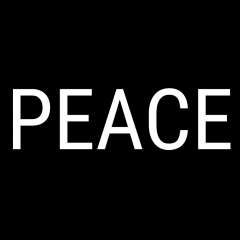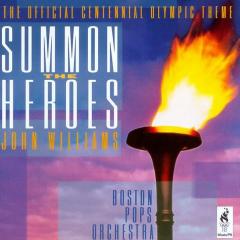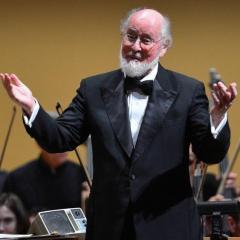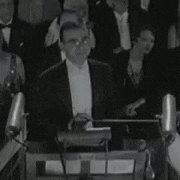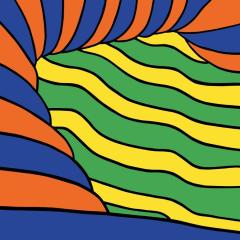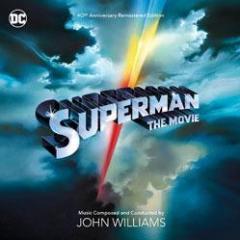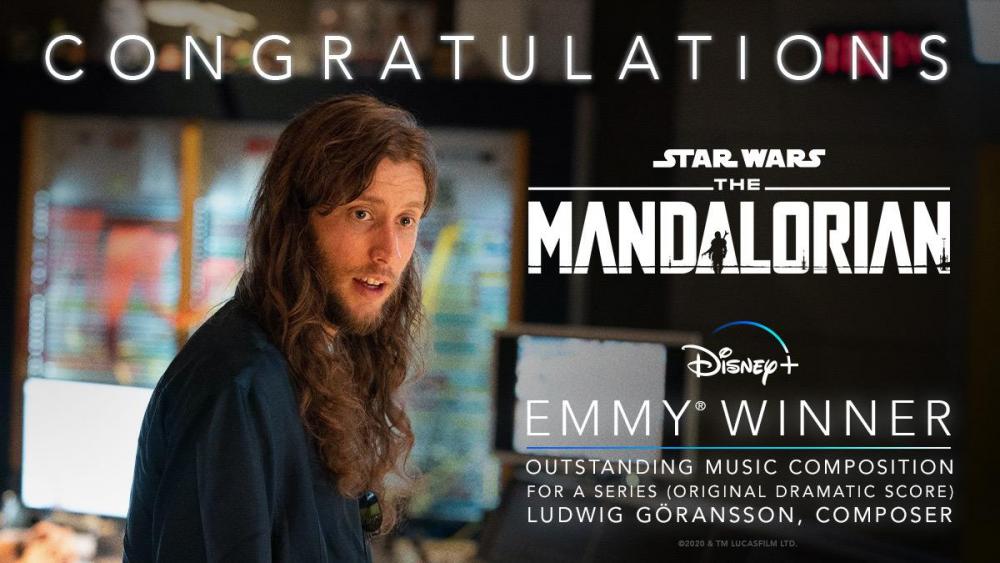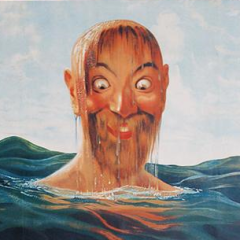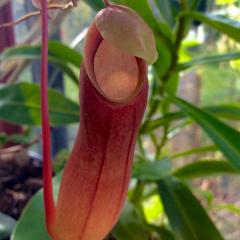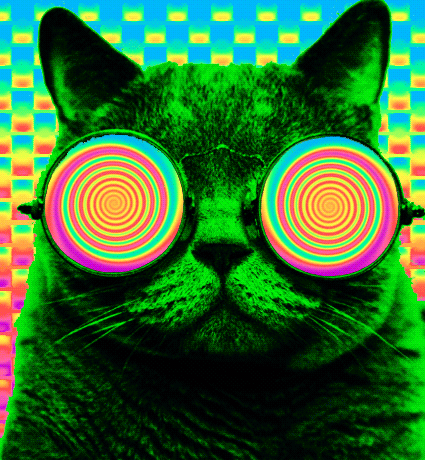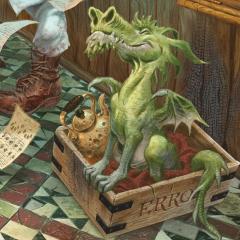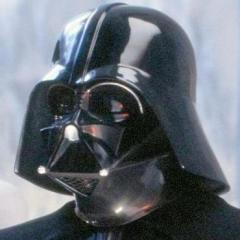Leaderboard
Popular Content
Showing content with the highest reputation on 20/09/20 in all areas
-
As an additional bonus, I decided to make a short video about repetitions of musical material between two timelines, created using a Time-Turner. Here I compared the following scenes: Sirius and Harry/The Werewolf Scene - Lupin's Transformation The Dementor Converge - Watching the Past UPD: As for the "Ludlow's unison" I said incorrectly: in fact, it is present only in Lupin's Transformation, but I think that JW still meant repetition of the material. But I may be wrong.5 points
-
In fact, quite a few fragments of the film have already been restored on the forum (@crumbs , @Skelly). But I was interested in trying to do it myself, and already with the whole score. The main "feature" of this score is that quite a lot of the music in the film has been heavily edited. Basically, it concerns action scenes (Quidditch, The Whomping Willow, Werewolf Scene). So there is not much point in "restoring" the score, a lot of black screens had to be inserted, but nevertheless, it's interesting to see what the composer originally intended, as well as to suppose what the rough cuts of the scenes looked like (JW wrote most of the music at a very early stage of post-production, but some cues were subsequently rewritten). Also at the end of the post, I experimented with my mockups of earlier versions of cues. For convenience, I have combined some short cues into one video, even if they sound with a long pause. Also in the description for the video, I decided to briefly mention the various thematic elements that sound there. Here I will write a quick overview of such stuff. Themes, motives, etc: Hedwig's theme - the only theme from previous films. Only the "A-version" is used (often only the first phrase), and takes on a nostalgic and melancholic character. Window to the Past - a simple lyric melody. It seems that initially it was supposed to scores only the dialogues between Harry and Lupin about Harry's memories and parents, but later the role of this theme increased, and began to be used when conjuring Patronus (as theme symbolizes happy memories), as well as Sirius Black, as the most dear person for Harry. Double Trouble - a song performed by the school choir on the first day at Hogwarts, written with words from Shakespeare's Macbeth. A kind of alternative to the Hogwarts hymn from the Philosopher's Stone, at the beginning it's used to create a mystical atmosphere in the film, then it depicts school affairs (Hagrid's lesson, the Fat Lady's escape). Similar to the hymn, it sounds only in the first half of the film. I have identified 2 versions of this theme: regular and 6/8 (time signature). It doesn't mean anything, I just separated them for convenience. Buckbeak's theme - only used once as a leitmotif, but it occupies a prominent place in the score. Sirius Black motive - consists of 3 intervals (like the Stone motive from Philosopher's Stone, consisting of 3 notes). Associated with the image of the "evil" Sirius, who is wanted, and (Harry thinks) betrayed his parents. Mystery/Marauder's Map motive - has a difficult fate. The motive consists of several repeated notes, and ends with a chromatic figure (similar to Black's motive), always performed on the harpsichord. Williams may have somehow connected this motive with the Sirius motive, but in fact, he used it in the scenes with the Marauder's Map. However, after the entire score was recorded, it was decided to re-associate this motive with Peter Pettigrew. So, in the film, the motive is added to more places, mixed with/tracked over the original material. Time-Turner motive - a four-note motive that always sounds as a repetitive ostinato. Used when the "second" Harry and Hermione are trying to change the course of events. The notes change frequently in the motive, but it still remains recognizable. Mystic strings - yeah, a silly name, but I mean solo strings, playing chromatic figures with tremolo (sometimes sul pont.). They have no definite meaning, in addition to mystic, they depict Dementors, but they are also an important element of the score. The Dementors motive - a rhythmic figure performed by low strings and woodwinds. Used primarily when Dementors "sucking the soul" of an opponent. The Prophecies aleatoric - aleatoric figurations at various instruments, used in two scenes with Trelawney. Note: I inserted music in its pure form, without an "speech track", since I am not good at extracting audio from 5.1/7.1, and, in principle, I also like this method more. I also shared a folder with all the videos that are embedded here. If this method is more convenient for you, then here is the link. 01 - The Prologue 1M1 Opening III Traditionally, the film begins with Hedwig's theme that is played here almost in classic form. As expected, fits. 02 - Aunt Marge's Waltz and The Parents Portrait 1M3A That's A Lie! (0:06-0:14) 1MB New Intro (0:20-0:47) 1M4 Aunt Marge's Waltz (0:47-2:31) 1M5 Parents Portrait (2:35-end) But already in the second cue oddities begin. In the film, the cue begins only when the aunt's finger swells, and it sounds in a shortened form. It's also known that a new intro was composed for the waltz, and, interestingly, if put the cue in this form, it turns out that the intro ends just at the moment with the Marge's finger. Most likely, the sequence with transformation of aunt Marge was not edited in some way, but before that moment something could have been cut. Anyway, I didn't bother to insert black screens, although this is hardly correct. And I had to ignore the mini-cue "Aunt Marge Point the Finger", since there is nowhere to insert it (maybe it was composed after the decision was made that this cue would be shortened? hmm). The Parent's Portrait fits, here for the first time a Window to the Past theme is presented, but so far in incomplete form. 03 - The Empty Playground · The Knight Bus · Concerto for Hub Caps 1MC The Empty Playground (-0:34) 1MD The Knight Bus (0:34-1:48) 1M8 The Knight Bus Ride "Concerto for Hub Caps" (1:54-2:52) 1M9 Newspaper Headliner (2:57-3:55) 1M9AN Squeeze Bus Waltz (3:55-4:20) 1M9B Second Collision (4:21-4:31) 1M9A Squeeze Play (4:44-5:10) The Empty Playground almost fits, except for the last two bursts. Next cue "The Knight Bus" (sequel to the Marge's Waltz, heh) also fits, but the ending with the celesta was dialed out in the movie. Concerto: I expected that I would have to insert a lot of black screens here, but in fact only one fragment was cut out here. There are some extra shots in the "deleted scenes" on DVD, but I decided not to insert them, since not all of them are completed in VFX. Interestingly, when Stan talks to Harry about Sirius Black, the mystic strings sound instead of his motive. There are a few small edits, but amuse the moment with the narrowing of the bus. Perhaps initially this process should have been slower, so the music turned out to be longer. I inserted both versions of this fragment (first the second (sounds in the movie), then the first). 04 - The Monster Book · Discussing Black 2M1 The Book Attacks (-0:38) 2M2A Discussing Black (0:45-end) The Monster Book: Just one slight edit. Discussing Black: Fits, but in the movie, this cue was shortened and mixed with the SHAWM (that's the source cue, so I didn't include it). The Sirius Black motive is introduced here, along with a strong hint of Mystery/Marauder's Map motive. If everything is clear with Black, JW clearly somehow connected the second motive with Black's motive, but all subsequent renditions are already directly connected with the Map, so everything is complicated here. 05 - The Train to Hogwarts · Apparition on the Train 2M3v1 The Train to Hogwarts (-0:22) 2M3v2 The Train to Hogwarts (0:26-0:44) 2M4 The Dementor Appears (0:59-end) The Train to Hogwarts: I again inserted two versions known to us (the first sounds in the film). In both versions, Double Trouble already sounds, in an incomplete form. It is interesting to note that the first version differs in orchestration compared to the notes, while the second is the same. Apparition on the Train: Lots of microedits. Perhaps the cue should have started earlier, then the first black screen could have been avoided, but I left it as it's in the movie. A piece (since 2:10) in the movie is out of sync, possibly on purpose. The ending (when Lupin comes to the rescue) was dialed out from the film and replaced with a choral chord - the cue was written early on, when Williams scored Patronus in a more dramatic way. The mystic strings has a horror function here. As the Dementor drains Harry, the Dementors motive sounds. 06 - Double Trouble · The Dumbledore's Warning · Double Trouble March · Rainy Nights, Dementors and Birds 2M5 Something Wicked Intro (-0:16) 2M5A Double Trouble (0:14-0:59) 2M6 Dumbledore's Warning (1:07-1:52) 2M8 Double Trouble March (1:56-2:23) 2M9 Rainy Nights, Dementors and Birds (2:29-end) All these cues featuring Double Trouble, sounding in different forms. Double Trouble with intro and in shortened form, fits. The Warning almost fits (I had to slow down a bit for a long shot of Dumbledore), but the ending replaced with material from the next cue. March: It's repeated twice on the recording, but in the film it sounds only once. Rainy Nights: In the film, the first half is shortened. The second half fits with the inserted deleted shots with Hagrid (Ignore fps issues on this fragment ). 07 - The Grim · The Hippogriff Lesson · Befriending the Hippogriff · Buckbeak's Flight 2M10 You Have The Grim (-0:32) 3M1+2 Double Trouble On The Hill (0:32-1:58) 3MC Befriending The Hippogriff (2:05-3:11) 3M4AX Drum Overlay (3:18-3:30) 3MCA [3M4AN] Riding The Hippogriff (3:28-end) The Grim: fits, but I used an alternate mix with a solo viola. Featuring the Prophecies aleatoric (harp and piano). Double Trouble on the Hill: Double Trouble 6/8 sounds throughout the cue. The first half was dialed out in the film, one black screen I had to be inserted. In the movie, the cue ends a little earlier when the book attacks Neville. I don't know how Williams intended it, but I let the cue finish as Hermione puts down the book. Befriending the Hippogriff: the second half is cut out in the film (with a short "enlightenment"), but despite this, everything fits. However, the ending (marked "optional" in the score) is not used in the film and was intended for the original start of the next cue, so I didn't use it either (see Bonus section). Buckbeak's Flight: the opening with the "runway" is greatly shortened, then I had to insert a couple more black screens. Further, when Buckbeak flies over the lake, in the film, the music is out of sync so that the climax coincides with the shot where Harry spreads his arms. Williams appears to have planned a climax for the wide shot with Hogwarts. Later in the film, it seems that the edit has changed, or some shots have been cut out, and therefore the ending is shortened and out of sync. Here I didn't edit the shots for sync, and just inserted a boring black screen, but the cue ends where it should have been. 08 - Bonding with Hippogriff · The Newspaper 3M5-5A[New?] Bonding With The Hippogriff (-0:43) 3M5B Kids Inspect Newspaper (0:46-end) Bonding with Hippogriff: first half dialed out in the movie. The second half is essentially a 3M13 Sir Cadogan cue with added percussion and a slow tempo. In the film, he doesn't sound all. At the same time, it seems that these 2 halves were recorded separately. In the film, instead of the first half, several bars of percussion sound only. The second half had to be taken from the film. The Newspaper: The Sirius Black motive comes back. Possibly out of sync in the movie, and ends later, so I slowed down the newspaper shot. 09 - The Boggarts 3M6N Snape Dresses Up (-0:49) 3M6A The Spider (0:52-1:22) 3M6B The Snake (1:23-1:39) 3M7X New Beginning (1:38-1:58) 3M7A Clown Out of the Cupboard (1:57-end) Snape Dresses Up: the first half of the new version and the second of the original version sound in the film. I inserted the new version here. The Spider: fits. There are 2 versions of ending on LLL - I inserted an extended one here (both endings are not used in the film) The Snake fits. Clown Out the Cupboard: I've inserted "New Beginning" here (which sounds in the movie), microedits. The ending (balloon) was dialed out, replaced by sounding of source cue. The Boggarts - Alternates 3M6 Snape Dresses Up (-0:42) 3M7A Clown Out of the Cupboard (0:43-end) It would be unfair to ignore the alternatives. Here is the original version of Snape Dresses Up and the Clown Out with original beginning. As for me, this version (Clown Out) is deeper and more interesting, as it essentially reproduces Harry's flashback from the train, quoting theme of cue 2M4 The Dementor Appears. 10 - On the Bridge · Remembering Mother 3M9 Revealing The Bridge (-0:36) 3M10Alt Remembering Mother (0:40-end) Everything fits here. Here the Window to the Past sounds in its full form, although a lot of time has passed since its first rendition. 11 - The Portrait Gallery · The Big Doors · The Great Hall Ceiling 3M11 The Portrait Scene (-2:13) 3M11A The Big Doors (2:13-2:50) 3M12R The Great Hall Ceiling (2:47-end) The Portrait Gallery begins with the sarcastic-ironic sound of Double Trouble B (the only time it's used apart from A). The theme is played by 3 recorders at once for a more nasty and fake sound. But after Dumbledore's appearance, the theme sounds more "panicky". And in the next scene, when Harry overhears Dumbledore and Snape's conversation, Double Trouble 6/8 sounds like a mystical lullaby. At the end of the cue, the Hedwig's theme sounds melancholy. The beginning of the Gallery in the film is greatly shortened. But if the cue starts with a shot where an empty portrait is shown in first time, then it fits. The ending was also cut out and it seems to be irrelevant for the final editing - I still did not understand what should have been instead of the shots with the large doors closing, so I inserted a black screen. The Big Doors (revised ending for The Portrait Gallery) fits. The ending of The Great Hall Ceiling (Hedwig's theme) is dialed out in the film, perhaps there should have been a transition to a deleted scene with Cadogan. 12 - Sir Cadogan 3M13 Sir Cadogan The scene was completely cut from the film, but the music seems to fit (in this version of the cue). 13 - Page 394 · Quidditch, Third Year 4M1 Page 394 (-0:25) 4M2 Quidditch 2004 (0:24-3:14) 4M2XV Choral Overlay (1:37-1:50) 4M2A Quidditch Ending (3:14-end) Page 394 used in place of the original harpsichord intro (can be heard on the OST), fits. Quidditch 2004: So we got to "blackscreeny" madness. A unique theme develops throughout the cue. When Harry sees the silhouette of a black dog, the Sirius Black motive sounds twice. At 2:48 and 2:54, something similar to this motive sounds also, maybe here Harry saw the silhouette for the second time... The original ending was probably never recorded. It looks like the editing of the scene has changed dramatically since Williams wrote the score. However, I managed to find some sync points. In the movie, the cue is heavily edited and, unfortunately, the original sync is almost broken. So I had to ignore the sync points used in the movie. I had to delete a short shot with Cedric and Harry. Also I very much doubt about the ending (fragment 2:58-3:23 in the film is synchronized in a completely different way). 14 - Woods Walk and Bird's Flight · Map to Snow Scene · Up the Stairs 4M3-4NN Woods Walk and Birds Flight (-2:26) 4M5 Map To Snow Scene (2:33-3:02) 4M5N Up The Stairs (3:03-end) During the dialogue between Harry and Lupin, the the Window to the Past sounds again, this time in addition to the recorder, it is played by the clarinet. When the owl flies, the Hedwig's theme sounds in its traditional form, and then smoothly flows back to WttP. Further, playful music with harpsichord and flute sounds. Apparently, after the shot with the Marauder's Map, a some cut shot should have followed. Thus, Map to Snow Scene cue became irrelevant. Up the Stairs is essentially a revised version. In both versions, the shot with the Marauder's Map is accompanied by a Mystery/Marauders Map motive. Also in Up the Stairs there are Invisibility Cloak chords that came here from previous films along with the Hedwig's theme. All cues fit. But in the film, the Hedwig's theme sounds slower and at the same time the first couple of measures with the harpsichord are dialed out. Interestingly, these bars are missing in the sheet score, but I used the LLL-version anyway. Also in the movie Up the Stairs is tracked in second time before the Snowball Fight. 15 - Snowball's Fight 4MC Snow Fight Microediting. It is not entirely clear why there is a pause in the middle of the cue. It looks weird in the movie, I made the second part of the cue start when Draco pushes Goyle. The ending is dialed out from the movie. 16 - The Three Broomsticks · Brief Snow Scene · Summoning the Patronus 4M10N(?) [The Three Broomsticks] (-1:11) 4M10 Brief Snow Scene (1:11-3:16) 4M11 Explore Your Past (3:20-3:54) 4M12 Opening The Trunk (3:54-4:31) 4M13 Harry and Voices (4:36-5:03) 4M14N The Dementor [Dueling The Dementor] (5:10-end) First cue (or the first half of cue) The Three Broomsticks dialed out from the movie. There are the Invisibility Cloak chords playing here again, the cue only seems to start when Harry enters the room. Brief Snow Scene: In the film, the beginning of the cue is mixed with the Christmas song "A Winter's Spell" (The Elves Song, composed by JW), the source cue. Some Hogsmeade footage appears to have been cut out here. The ending, which is a smooth transition to the next scene, is cut out from the film - I think there should have been wide shot(s) for the office before Lupin speaks, so I put b/w filter. Summoning the Patronus: In Opening The Trunk cue the Dementors motive is heard as Harry begins to faint. In Dueling The Dementor, after a successful attempt, the Window to the Past sounds pathetic. Thus, the theme symbolizes all the joyful memories (about the parents) that are necessary for a successful summoning the Patronus. After that, the oboe plays the theme again. Fortunately, all 4 cues fits, with the exception of the contrabassoon solo from the second cue, which was dialed out in the film. 17 - The Buckbeak's Fate · The Marauders Map · Reveal Your Secret 5M1 Buckbeak's Sentence (-0:48) 5M2 Reading The Map (0:53-2:48) 5M2A Reveal Your Secret (2:54-end) The Buckbeak's Fate: judging by the blooper with Harry on the bench, there should have been more shots of Hogwarts or something like that. The music in the film is shortened. The Marauders Map: Oh, everything was suddenly complicated here. The Mystery/Marauders Map motive here runs through the whole cue (along with a lot of mystic strings) and gets its culmination here. I decided to start the cue earlier than in the film: at the beginning of the shot with the marauders map. In the film, the music begins when Harry discovers Pettigrew on the map (as this motive is "reassigned" to this character). Most likely, the footage was cut as Harry moves from the living room to the corridor. The final editing of the next scene is very chaotic and to "restore" the music I had to rearrange many frames in places. It even ended up with a funny black screen in the middle of the frame: it was divided into 2 parts, which were used in different places. Reveal Your Secret: cut entirely from the movie, but fits. According to Williams' idea, it turns out that this is the last time that motive featuring. 18 - The Mention of Pettigrew · The Crystal Ball · The Executioner · The Walk to Buckbeak 5M3 The Mention Of Pettigrew (-0:38) 5M5 The Crystal Ball (0:44-3:29) 5M6 The Executioner (3:28-4:09) 5M7 The Walk To Buckbeak (4:14-end) The piece with the celesta from The Mention of Pettigrew in the film is shortened. In The Crystal Ball, the middle section is completely cut out in the film (interestingly, the big pause at this mark is indicated in the score). Featuring the Prophecies aleatoric again, now to the harp and piano joins synth. Interestingly, at 1:50 in the score, one can notice that the timpani are playing Time-Turner motive (maybe Williams thought that at this time Harry and Hermione were starting to move in time? hmm). In the shots with the Sirius on the Ball there are a couple of microedits. The Executioner fits, and The Walk to Buckbeak in the film starts a little later, but I decided to move it 2 sec earlier for better sync. 19 - The Sentence · Chasing the Scabbers · The Whomping Willow 5M8 Buckbeak Is Sentenced (-2:43) 5M9 Scabbers Runs (2:42-3:46) 5M10 The Whomping Willow (3:55-end) The Sentence: In terms of syncing, this is probably the strangest cue in the movie. If you follow the sync points from the movie, you get a strange black screen before the trio leave the hut. And the sync points themselves look weird. I made 2 separate videos with different syncs. Here I followed the "safe" method, and left almost everything, as in the film, didn't edit the shots (only the moment with the actual "execution" had to be shifted, since the music in the film was shortened). Chasing the Scabbers: The first half, surprisingly, fits. But the second is shortened. The Whomping Willow: Madness of black screens again. As with the Quidditch scene, the editing has changed a lot here, but the sync points can still be found. Interestingly, a short segment on 4:33-4:37 with pure percussion is used in the film for the shot of Hermione circling the willow (the last shots before this black screen), but it looks like it was intended for something cut out. It can also be noted that the repeating theme of this cue is based on the first notes of the Hedwig's theme, but I hope there are no hidden meanings here. The Sentence - alternate syncing https://drive.google.com/file/d/1Hb9ca6a_iHbqv_squhDYy8TvtYRo1B8O/preview Here I decided to start the cue earlier to avoid the black screen. It turns out that the cue starts even before the second stone hit at Harry. But stealth music starts right away when Hagrid hides things. I also tried to synchronize the harp passage with the shot where Hermione is looking towards the forest (I had to expand it). The shots of how the main characters climb the hill, on the contrary, had to be cut a little. The truth seems to be somewhere in between. 20 - Confrontation in the Shrieking Shack 6M1 Entering The Shrieking Shack (-0:28) 6M2 The Confrontation Scene (0:27-end) Already at the beginning of the scene, the Sirius Black motive sounds alarming (the Mystery/Marauder's Map motive sounds here in the film). Finally, when Sirius appears in the frame, S. Black motive sounds powerful ("With great force" mark in the score). But as soon as Harry puts his wand to his face, the motive takes on a mysterious sound. Suddenly Lupin enters, and then the music begins to clearly follow what is happening (passage of the harp and harpsichord when Sirius and Lupin embrace; the repetitive notes of the muted horn when Hermione reveals their intent). The rise in tension is stopped when Lupin gives the wand to Sirius. With fanfare, Sirius mentions Pettigrew, but Snape suddenly enters. As Remus and Black try to calm Snape down, the Sirius Black motive is repeated periodically. When Snape threatens Sirius, synth chords sound like Invisibility Cloak chords, but in this case they seem to be related to the mention of Dementors. Harry stuns Snape, and then SB motive repeats. When Sirius points to Scabbers, the music changes, tense tremolo strings appear, gradually increasing in dynamics. When Sirius finally takes Scabbers, the music depicts the rat's desperate attempts to escape, and when Scabbers transforms into Pettigrew, the music "freezes". Only low strings and slow SFX sound. Later, the brass instruments quietly join in, and when Pettigrew begs Harry for mercy, the tension reappears in the music, which is interrupted by the Harry's demand to keep him alive. At the end of the cue, motive of muted horns sounds like a mirror reflection of the SB motive, or like the end of Marauders Map motive. In the film, the entire last part (after the rat's transformation) is replaced by 5M2 Reading the Map tracking. The Confrontation Scene are heavily edited in the film. Some segments are dialed out or tracked, some are looped. However, there was almost no need to insert black screens (except for Lupin entrance). In other cases, the frames had to be cut on the contrary (I cut out some shots with the reactions of the trio, there is also something wrong with Snape's lines). The rat runaway sequence has been edited: the dissonant music in the film starts when Sirius dropping the Scabbers and the previous piece is looped. The last part in the film is completely tracked over (The Marauders Map), but fits. 21 - Sirius and Harry 6M4N Sirius And Harry Almost matches (only the end is slightly shortened). Solo horn and strings quietly plays Window to the Past, that is now also associated with Sirius. At the end, the Hedwig's theme sounds melancholy, highlighting an important moment for Harry. 22 - The Werewolf Scene · The Dementor Converge 6M5 The Werewolf Scene (-4:23) 6M5AN First Frozen Lake (4:21-end) The Werewolf Scene: The music is very chaotic, aggressive mickeymousing (I especially love the beats of chimes, metal pane and anvil, synchronized with Lupin's ripping clothes). If talk about themes, then may note the mystic strings that sound when the werewolf hears someone's howl (second Hermione). The first two-thirds are a very sad mess. Almost all sync points are perfectly detectable, but quite a lot of video material was cut out. Then it gets better, however, I had to slightly shorten/lengthen some shots for full sync. The Dementor Converge: At the beginning of the cue, there is tracked material from 2M4 The Dementor Appears (the scene in a Hogwarts-Express) with slight changes in orchestration, and new strikes when Harry discovers the dementors circle. Accordingly, the Dementors motive also sounds here. The action-part [5:13-5:44] in the movie sounds slower, but I used the LLL/OST version and shortened the footage. I also had to slow down pretty much the footage between Sirius "freezing" and Patronus appearing. Next is the material originally intended for 7M4 Watching The Past cue (when the second Harry summons the Patronus, see Watching the Past and Bonus section), but the choral chords are changed and the tempo is faster. 23 - Time Past · Saving Buckbeak 6M7 Reviewing The Recent Past (-2:44) 7M1 Viewing The Recent Past (2:43-5:27) 7M1A Saving Buckbeak (5:26-9:28) 7M1B Bats Extension (9:28-end) Here Time-Turner motive is introduced, which used as an ostinato. As they look down the hill at Buckbeak near the hut, the quote from Buckbeak's theme sounds quietly. In the next cue (7M1), a new ostinato motive appears, based on Time-Turner motive. It's interesting that the loud passage of the woodwind when Hermione throws a stone isn't marked in the score, but in the film that passage is tracked even during the second throw. In Saving Buckbeak (third cue) the TT motive disappears, a minimalistic texture sounds (originally, these marimba chords were supposed to be combined with a separate pitched synth, imitating the "ticking" of a clock, but this idea was abandoned (here's my reconstruction of it). At the very end, the film has a different ending (7M1B New Bats) but I decided to choose the one that sounds in OST (Bats Extension), since the transition to the newest ending is not implemented gracefully. For all known endings of this cue, see Bonus section. Now about sync: the first cue fits, except for a strange moment before Harry and Hermione start running outside (I had to stop the video, since here is a continuous shot). The second cue almost fits (but it seems that some of the conversation between Fudge, Dumbledore and Hagrid has been shortened). I left the ending of the cue as it syncs in the movie, but the first ~20 seconds of the next cue (Saving Buckbeak) are dialed out in the movie. So I decided to repeat the video, and placed the cue in such a way as to match the syncing of the movie. In the film also the moment of the "execution" was shortened, here I had to split the frame in a funny way (perhaps 2 frames were merged together, on the left we see the closing of the door, and on the right, the preparation of the ax). The ticking sound in the movie also sounds in Saving Buckbeak, but since we have a "clean" version from OST, I used it. 24 - Lupin's Transformation · Watching the Past · Rescue of Sirius · Sirius Says Goodbye · Turning Time Back · The Whomping Willow Revisited 7M2 My Dad Conjured The Patronus (-1:36) 7M2 New Ending (1:35-2:02) 7M3 Buckbeak Saves The Day (2:09-2:42) 7M4 Watching The Past (2:42-3:53) ??? [The Patronus Light] (3:55-4:47) 7M5 The Rescue Of Sirius (4:48-6:05) 7M6 Sirius' Final Scene (6:12-7:39) 7M6A Turning Time Back (7:39-8:23) 7M7R Whomping Willow Revisited (8:26-end) Immediately 9 cues, which fit in 10 minutes. Lupin's Transformation begins with a quote from 6M4 Sirius and Harry. But since a WttP theme was added in the new version of Sirius and Harry, an insert with it is also played here in the film (see the next video with alternatives). When Harry and Hermione begin to descend, I had to insert a couple of black screens. Here I also used the new ending used in the movie (also see the next video for the original version). Short cue Buckbeak Saves The Day (with a new quiet opening, not considered a separate cue). This is the only time in the score when such figurations of strings, duplicated by woodwind, appear. The cue smoothly turns into Watching the Past which begins with the return of the Time-Turner motive (there is also a ticking sound in the film). Then the material from the old version of First Frozen Lake (The Dementor Converge) starts to repeat (see this video for more details), but as a result of changes, in the final version the only thing left is the repeating Dementors motive. Then a new insert(?) sounds, which is a mix of several layers: a shortened OST track "The Patronus Light" + an additional choral layer + a separate layer with horns playing the Window to the Past. See the next video for the original segment. The Rescue of Sirius: in the film it starts a second later, so it's a little cut. There is also a slight desync in the film (so that the culminating reading of the Buckbeak's theme begins with the "explosion" of the cell, and not from the next shot in the film). Sirius Says Goodbye also starts a few seconds later in the film, therefore it's shortened. Interestingly, the harpsichord was removed in the film. Here the Window to the Past sounds for the last time and climaxes. In the film, this cue crossfading into the next, but here I decided to put a black screen to separate them. Turning Time Back, in turn, represents the last appearance of the Time-Turner motive, the instruments gradually fade at the end until there is only one synth left. The Whomping Willow Revisited fits, another rendition of the Hedwig's theme (a reference to the end of The Great Hall Ceiling, when the theme was also played in the shot with the Willow). Lupin's Transformation and Watching the Past - Alternates 7M2 Insert (0:25-0:49) 7M2 My Dad Conjured The Patronus (original ending, 1:03-1:32) 7M4 Watching The Past (original ending, 1:43-end) 7M2 Insert: The original cue is slightly elongated due to the insert. 7M2 Original ending: In fact, there are 7M2A String Overlay in the score to be mixing with this ending, but we don't have a recording of it. These are essentially clusters and slow harmonic effects for strings. 7M4 Original ending: Since this material was later used in First Frozen Lake, it seems that this recording was made in the early stages (even before the new version of First Frozen Lake was composed). However, this ending fits perfectly with the final cut (except for the last chord, which is on LLL). There is also an alternate version in OST ("The Dementor Converge"), where a layer with horns playing WttP theme is added (in the same way as for the new insert) - it's not known if this was intended specifically for the OST, or for use in the film. 25 - Lupin's Departure · The Firebolt · End Credits 7M9 Lupin's Departure (-0:54) 7M11NN A New Broomstick (1:01-2:08) 7M12 End Credits (2:07-end) Lupin's Departure: shortened in the film. The last chord isn't used in the film (and it's absent in the score), the ending is mixed with a part of Sir Cadogan (judging by the numbers of cues, this was originally conceived). The Firebolt: fits. The sound of the Hedwig's theme at the opening of the package, the triumphant return of the Flying theme, and the solemn sound of the Hedwig's theme at the beginning of the credits. The beginning of the credits music is also included in this cue. I had to insert black screen before the credits, since the music was shortened here. End Credits: Lots of renditions of Double Trouble (including 6/8 version), then an emotional, but small segment with renditions of the Window to the Past. And then transition to the classic Hedwig's theme suite, starting with the Flying theme. It's interesting that another ~4.5 minutes of titles remain without music - probably, it was planned to insert something else here. Bonus - Experiments with mockups... Sounds awful, but why not. Quite a few alternative versions of parts have accumulated in the score, which have not reached us in the form of orchestral recordings (most likely, almost none of this was recorded). I decided to try and sync the most of them. Old transition between Befriending the Hippogriff and Buckbeak's Flight 3MC Befriending The Hippogriff (-0:30) 3MCA Riding The Hippogriff (0:30-end) This is where the "optional" cue ending comes in handy. There are not enough frames for it, but we got a smooth transition to the next cue. Remembering Mother - Original version 3M10 Remembering Mother An old alternative to WttP theme. Old ending of The Great Hall Ceiling 3ME The Great Hall Ceiling [old version, not 3M12] There are few differences from the final version, the most interesting thing here is the ending. I used to think that Dumbledore's dialogue with Snape was supposed to be longer, but it looks like the "lullaby" continues in the shots with the Whomping Willow - see how the falling leaf synchronizes with the "falling" trills of the strings. And only then the Hedwig's theme sounds. Interesting... Enter Winter (Woods Walk and Bird's Flight) - Earliest version 4M3+4 Enter Winter This version of the cue obviously starts later, leaving Lupin's dialogue with Harry without music. Also, apparently, the shot with the flying owl should have been shorter, otherwise the footage will not sync. (The later version of the cue has a Hedwig's theme at this moment). Woods Walk - 2nd version 4M3+4N Woods Walk And Birds Flight Already strange things are happening here. In this version, the dialogue between Lupin and Harry is already scored, but the music is longer than this scene. In the script, all the lines seem to match, so it's not clear what could have been cut here. I tried to speed up the tempo of my mockup, but in this case it sounds very strange. So I left my slow tempo and insert a black screen. Dueling the Dementor - 1st version 4M14 Dueling The Dementor Apparently, there should have been more Patronus shots here. A scene with this kind of music feels very different. Then the old alternative version of WttP is played. Dueling the Dementor - 2nd version 4M14 Insert For Patronus Light The music sounds lighter, a female choir is added, but there is still no WttP theme. Perhaps it was on this stage that Cuaron and Williams tried to find the "true" sound of the Patronus... By the way, this version is already shorter than the previous one. Sirius and Harry - Original version 6M4 Sirius And Harry At first everything matches. But after the Pettigrew shot, the sync breaks. As in the case of the 4M3+4 cue, in the script, it seems that all the lines almost fits with the film, but nevertheless, the music is longer than the scene. The Dementor Converge - Original version 6M5 Pt. II Perhaps the most interesting mockup. Here it is interesting to see how much the dramaturgy (uh) of this scene has changed. In the beginning, I decided to insert The Dementor Circle (from LLL): we don't know what exactly this recording was intended for, but judging by the use of the material in 7M4 Watching the Past, I can assume that this is a choral overlay that should have been played at the beginning of that scene. In this case, in the film, this overlay was replaced by the sound of one static female voice. It's noteworthy that the moment with Harry's attempts to summon the Patronus is cut. It's funny that this version fits the final cut, even better than the final version of the cue (I didn't have to expand the frames before the Patronus appeared). At the same time, I had to shortened the shots with the Patronus itself. Also interesting is the moment with the successful Patronus at the end - musically it feels like a kind of vision through a dream (in the score the maximum dynamics is mezzopiano), but we only have a recording The Patronus Power (we also don't know what it was recorded for, but it expands on material from this version of the cue), where the sound is louder and clearer. The ending is shorter, I had to delete one shot with Harry. Endings of Saving Buckbeak Just different versions of cue 7M2 endings. Old opening of Buckbeak Saves the Day 7M3 Buckbeak Saves The Day Small mockup, but still. This version of the cue begins as soon as a werewolf appears in the shot. The music sounds epic right away. In the final version, low strings tremolo sounds here. Ext. Whomping Willow - Original version 7M7 Ext. Whomping Willow Old cue alternative without Hedwig's theme. Perhaps the Willow shot was longer, and the cue should have started playing at the start of this shot. Lupin's Departure - Original version 7M9 Lupin's Departure It's funny how JW decided to scored the closure of the Marauder's map. In addition, in the final version of the cue, the cellos and solo oboe parts were reversed, and a major chord was added at the end. The Firebolt - Original version 7M11 A New Broomstick (-0:51) 7M12 End Titles (0:50-end) And now the end of the movie. Two major differences: the moment where Harry trolls the students was cut out, as well as the instant transition to credits. Miscellaneous There is the original 4M2 Quidditch 2004 ending in the score, but since the scene is difficult to recreate, I didn't sync my mockup with the image. 5M1 Buckbeak's Sentence cue features a harpsichord part that only plays short melismas on one note. The next cue (5M2 Reading the Map) begins with the playing of the Marauder's Map motive on the harpsichord (in the score it's indicated by an octave higher than on the recording, on the same note on which the melismas were played in the previous cue). This creates a smooth transition between cues. Maybe I'll do a mockup someday. The version of 5M6 The Executioner in the score is slightly different, @BrotherSound made a mockup. Interestingly, at 0:24 there is a strange hint of Time-Turner motive, although at this time the "second" Harry and Hermione should really catch up with the main trio. In 6M5 The Werewolf Scene there is a moment (a werewolf fight with a dog), when only brass instruments remain. There are some percussion parts indicated in the score at this place, but they were not recorded. Maybe I'll do a mockup someday. In total, in the score, there are 3 types of "ticking" of the Time-Turner. The earliest can be found in 7M1A Saving Buckbeak and 7M6A Turning Time Back cues - there it's a separate pitched synthesizer, sometimes duplicating other instruments (however, in Turning Time Back it rather imitates the sound of "ticking"). Here's my mockup of this synth in 7M1A. The second type is in 7M1 Viewing the Recent Past cue, close to the final version, but at one moment it changes the pitch (although certain notes are not indicated). The third type is indicated in 6M7 Reviewing the Recent Past, and apparently this is the final version (standard, non-pitched ticking) that we know. In scores, recorders and harpsichord are often notated an octave higher than they sound on the recording. Williams may have originally wanted to use recorders in the same way as in the Philosopher's Stone, where they sounded in high register (House Selection; Love, Harry). In some places of the score, the recorder playing the WttP theme is optionally duplicated by the lute. As a result, only the guitar duplicates the theme in 7M6 Sirius' Final Scene.3 points
-
I found it annoying a cameo extra was given so much screentime. Nothing againt Monaghan, but it's so distracting.3 points
-
I find every frame of that movie to be odd.3 points
-
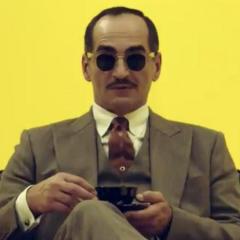
Next James Bond actor after Daniel Craig?
TheUlyssesian and 2 others reacted to Arpy for a topic
JWFan?3 points -
They all told him the same thing: “Spielberg wanted me to score Schindler’s List, but I was dead.”3 points
-
Here's a theme that doesn't get much love -- The Knights of Ren motif: It's not quite the most original of Williams's themes. Heck, it's about as generic as you can get in his style: a repeated note, followed by semitonal double neighbor figure. Blame it on the uninspired, underwritten antagonists it's supposed to depict, I guess. Perhaps the theme's punch is diminished due to a certain fuzziness of signification. In fact, on my first couple of listens I took it, wrongly, to be an additional Kylo Ren theme. The main culprit in this confusion is the first, ear-grabbing rendition accompanies the big Exegol building during the opening sequence -- not the KoR themselves. (Whether this is tracked, spliced, or something else I have no clue.) Still, there are some neat treatments throughout the score. My favorite is probably for the reforging scene (2M2), owing to the slippery string accompaniment and the way it kind of lines up with the rhythm of the hammer strikes. It's also noteworthy that, right away, we're getting two different versions of the theme, one that begins on the 5th scale degree (as on Exegol) and one that begins on the tonic (reforging). What I'm really interested to hear JWfan's opinion on in is the ostinato figure underneath the theme in 3M6 "Knights of Ren," which accompanies their "cool" aerial pose after landing on Pasaana. (Starts at 47 seconds below) Tell me that doesn't sound a little -- even a lot -- like the ostinato from Duel of the Fates? Has this been remarked upon elsewhere? The DOTF-line is extremely hard to hear clearly against soundeffects, but I'm fairly certain it's either G-A-G-F#-E, A-A-G-F#-E, or a combination of the two. Maybe relevant that E-minor is the key DoTF is most strongly associated with, and that's what this cue is in too. And rumor had it that Williams did record some form of DoTF for Episode 9. Anyone able to clean up the audio here to make that ostinato more audible? Edit: Listening even more carefully, I'm not hearing DotF that much any more in this cue -- instead, I'm getting a Bb-A-Bb-A-G-E-E pattern. But it's still very hard to make out discrete pitches. Oh well!2 points
-
Lol. Something about reducing an entire musical culture to a sample library from which to pick and choose the sounds you like seems kind of problematic to me. But I guess that's how film music operates these days...2 points
-

How do you rate John Barry's "Sappy Four"?
Jurassic Shark and one other reacted to publicist for a topic
It surely has, but Somewhere in Time has a more intimate romantic sheen. It's pretty awful.2 points -
2 points
-
A few years before the set was even considered I implored Matessino to do it as a stand-alone 3CD set for this and specifically requested that the OST album be made part of this. I even made my own version of the track list for the set. This was around the time when the FSM set became OOP. I was told it would eventually happen in the future but there was a lot of paper work and approvals required. Fast forward to the future, and as plans to issue the standalone set were set in motion and it was going to be a high resolution transfer from the same sources that was used for the FSM set.But then a Miracle happened and the original recording session were discovered. The rest is history....2 points
-
The 2020 Emmy nominations list
The Illustrious Jerry and one other reacted to Disco Stu for a topic
Göransson and Donald Glover present THIS IS AMERICA...N MUSICAL THEATER!2 points -
The 2020 Emmy nominations list
Smaug The Iron and one other reacted to Disco Stu for a topic
2 points -
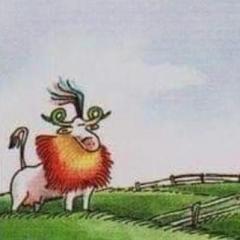
The 2020 Emmy nominations list
Holko and one other reacted to The Illustrious Jerry for a topic
I guess I misunderstood, as Reznor and Ross won outstanding music composition for a limited series, movie or special. Goransson has officially won outstanding music composition for a regular series. Anyways, both of them now have an Emmy, Grammy and Oscar. Congratulations, Ludwig! Look forward to hearing more soon!2 points -
The 3rd disc contains a brand new rebuild of the 1978 OST album because it's an iconic album and everyone felt it should be included in the definitive release of this score. When JW constructed the album in 1978, it was all made from the same takes and mixes as the cues that went into the film (this is one of those scores where Tomlinson cut the performance edits directly on the 1st generation tape, so all releases have always have the correct takes everywhere). When the original LP program was released on CD in the US years later, 2 tracks were cut to fit the CD limitations at the time; the full 1978 LP program had only been released on CD in Japan before the LLL debuted it in the US 41 years after its USA LP debut. The entirety of the LLL set is an entirely new mix. All previous albums used 2nd, 3rd, or 4th generation sources that all contained Tomlinson's film mix. For this release the first gen tapes were finally found, but they were multitrack - Tomlinson's film mix was not re-dubbed onto spare tracks on the 1st gen tape. So Mike created his own brand new mix from the first generation multitrack for every single cue in the score. So this edition of the 1978 OST album is Mike's new mix, not Tomlinson's old mix. After the mix, as far as mastering goes, the original LP was mastered in one way back in 78, the 2000 Rhino was mastered differently, and the 2008 was mastered differently again - except for any tracks they had to take off the album master. The LLL album was entirely mastered by Mike including the OST rebuild. One final note is that there is some piano heard in the Planet Krypton OST track that isn't otherwise in the Rhino, FSM, or LLL main program, so including the OST program in this set was a great way to include that little bit that Williams apparently liked enough to put on the LP (the only thing that differed from the film mix on the entire LP, other than the different placement of Margo Kidder's vocals)2 points
-

Michael Kamen's ROBIN HOOD: PRINCE OF THIEVES (1991) - New 2020 Intrada edition
Yavar Moradi reacted to jwalk713 for a topic
This is a dream come true. 😊 This score is truly magnificent, and to have completed sequences available now will quite elevate the listening experience. As always, I greatly appreciate Intrada going back and re-working/re-issuing these projects when they discover new elements. T'is a labor of love! Huzzah!1 point -
1 point
-
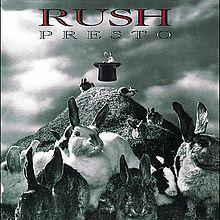
What Is The Last Film You Watched? (Older Films)
Chen G. reacted to Naïve Old Fart for a topic
I can't see it.1 point -
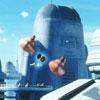
What Is The Last Score You Listened To? (older scores)
bruce marshall reacted to Bespin for a topic
Alan Silvestri - The Abyss Alan Silvestri - Father of the Bride Alan Silvestri - Contact Dirk Brossé - Alan Silvestri at Film Fest Gent (2005) and now.... Mike Rose - Three Choral Suites from Ben-Hur, Quo Vadis and The King of Kings (dir. Erich Kunzel)1 point -
I never liked it, it's a lowbrow housewife melody that people always seem to associate with film music. Before Schindlers supplanted it.1 point
-
It is quite usual for some of the better conductors of classical music to give such freedom in the spirit of interpretation. This is for example the reason I like Carlo Maria Giulini‘s recordings better then e.g. some by Solti or Karajan. Guilini takes the time to allow such small freedoms that enrich the interpretation, and sacrifices absolute mechanical tempo accuracy for it. You may prefer a less flexible approach in interpretation, perhaps because you are used to it by modern American orchestra standards and especially film score recordings, but you can‘t deny that there is that kind of mostly European tradition in conducting. I think anybody with good knowledge of the conductors of the past and there approaches will recognize it here.1 point
-
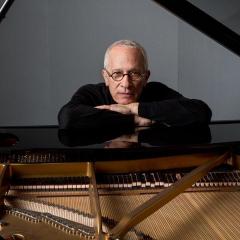
How do you rate John Barry's "Sappy Four"?
Jurassic Shark reacted to Edmilson for a topic
I love Out of Africa and Dances With Wolves. Two of my favorite film scores ever created. The other two I like, they're okay scores.1 point -
After reading this discussion I listened to the Jaws Excerpt on the Dudamel and the Vienna CD to compare. Dudamel is faster which is nice at the beginning but sounds hurried when the strings come in. Also, the flute solo sounds very weak and mechanical. Yes, it is rhythmically faultless, but does not contribute much. In contrast the Vienna flutist tries to interpret his line musically, by not playing all notes exactly alike, but forming small phrases which makes it much more interesting to listen to. Unfortunately this leads to minor timing problems, but I am willing to pay that small price for the better interpretation. On the whole the sound on Dudamel is more sterile, studio-like while in Vienna you have more of the live feeling being in the room with the orchestra. You also hear more details in Vienna like the piano playing along with the basses at the beginning of the shark fugue. And the ending is much more impressive in the Vienna recording. On the whole I like having the Dudamel recording as an interesting alternative and for the few exclusive tracks, but listening to the Vienna recording is still more satisfying musically for me, even on the CD which does not has optimal sound.1 point
-
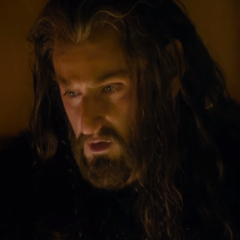
Star Wars is better than everything
Naïve Old Fart reacted to Chen G. for a topic
He didn’t; he just said he did.1 point -
Yeah I would rate that score: 4 stars.1 point
-
See, no one remembers the Jedi, but they know legends of the fucking Sith?1 point
-
Don't give up hope. Things will return to normal in time.1 point
-

Star Wars is better than everything
Arpy reacted to Manakin Skywalker for a topic
They're just setting up episode X where it is revealed that he was the true villain the whole time.1 point -
The only thing that could rectify this is if Palpatine conducted a Sith ritual to cloud the minds of everyone in the galaxy following the Purge. Thousands of years of history with the Jedi's involvement in socio-political affairs, the emergence of Force Sensitive children around the galaxy and the fact that planets saved by them during the Clone Wars is all too much for mere Imperial propaganda to dispel in less than 30 years! Not to forget, Palpatine formed the Galactic Empire by framing the Jedi.1 point
-
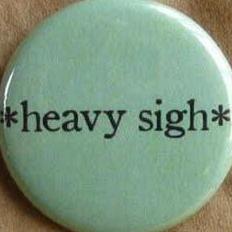
Next James Bond actor after Daniel Craig?
Naïve Old Fart reacted to Sweeping Strings for a topic
Mmm ... the 'What makes you think this is my first time?' line from Skyfall was far enough down that road for me, thanks very much. And even that could well be Bond referring to Le Chiffre tying him to a chair.1 point -
Its a big plothole not because you can't find ways around it, but because you the viewer intuitively know its a plothole and must find ways around it (or live with it, like I do). When I first watched Star Wars, I had already seen the prequel trilogy, and it was instinctivelly clear to me that the film was concieved with an entirely different continuity in mind. Almost every frame of the movie screams this, even the clothes that every other Star Wars movie wants you to believe are Jedi robes are clearly just Tatooine attire. Its especially egregious when you hear Lucas talk about how its all actually "one movie." The man's full of shit.1 point
-
It's not that big a plot hole really. Imperial propaganda would've painted the Jedi as irrelevant sorcerers for decades. Didn't they have control over most of the galaxy at the height of the Empire?1 point
-
For some reason I always associated the timpani short motif with the KoR rather than the motif Falstaff listed.1 point
-
That extended Firebolt alternate is cool! I never realised there was deleted footage there (but it was a wise omission for sure). Really hope Williams recorded these early versions, and the analogue masters for POA are eventually located. Would happily buy a 3CD set for Azkaban if it included another half dozen alternates or whatever.1 point
-

Next James Bond actor after Daniel Craig?
bruce marshall reacted to Arpy for a topic
He does tend to play the villain, but I think that's the range of his acting ability to take on those roles, and besides, villains are usually the more interesting characters. I think given the right direction, story etc. he would make a great Bond and in five years time we'll be looking back thinking why JWFan hated the idea in the first place.1 point -

The 2020 Emmy nominations list
Not Mr. Big reacted to Edmilson for a topic
I haven't watched The Mandalorian (Disney+ will only arrive here in Brazil in November), but I listened to the 8 albums, and they're all great. Congrats to Gorannssoon, one of the most interesting composers that came out over the last few years.1 point -
Hardy is just as likeable, if not more.1 point
-
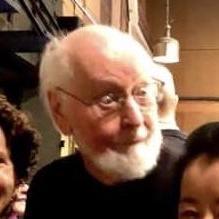
Always cue titles
crumbs reacted to BrotherSound for a topic
There’s been a handful of sketches in circulation: 6M2 Pete’s Aura 12M2? Dorinda Solo Flight 12M3 Dorinda + Pete 12M3 Alternate - Dorinda and Pete 15M1 Among the Clouds 15M2 Dorinda Survives @crumbs Does that cue number make sense for Dorinda Solo Flight? I haven’t seen the film. The top is cut off, but there’s an instruction at the beginning to “Overlap R[something]P1”. Looks like “12” to me, but it’s not very legible. 12M3 Alternate is the version of “Dorinda and Pete” on the OST, but it’s only the first 1:35 of the track.1 point -
They are partially mutually exclusive when the way a book is told and the way a story flows in a novel is so instrictically different to the way it does onscreen. To make a good film out of a novel, you need much more than just abridge the novel down to a suitable length: you need to make the story work for a different medium. As such, adaptations can only be considered faithful insofar as they adapt the themes and core narrative of the source material, rather than the intricacies of its plot and characters. Besides, what is there to be faithful to with regards to the timeframe selected by Amazon? If you complied all the writings across all of the different versions of the story of the Forging of the Rings it may amount to two pages of text.1 point
-
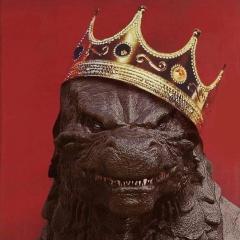
What Is The Last Film You Watched? (Older Films)
Sweeping Strings reacted to Unlucky Bastard for a topic
Story of my life.1 point -
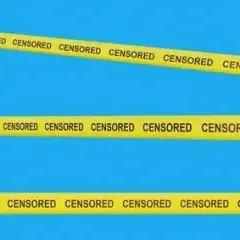
John Williams & the Vienna Philharmonic: January 18/19 2020
Biodome reacted to Jurassic Shark for a topic
About time that JW corrected the scores of Mahler.1 point -
Speakling of Plowing, i wish Williams had incorporated that epic climax into the War Horse concert suite .Imagine the Vienna orchestra playing that!1 point
-
Hmm, you've put more thought into your response than I did in my little platitude! There certainly is film music that is great on its own, but not so much in context of the film its meant to accompany. I struggle to think of any scores from Williams that fit this category, though maybe a few cues here and there -- "Plowing" from Warhorse, maybe, a spectacular piece of music which is rather overblown in the scene it accompanies. Possibly quite a few entries in this book would also qualify.1 point
-
Sometimes, I think the worse the movie, the better the score. And the converse is true: otherwise humdrum or unremarkable film music in a well-regarded movie can get a pass, and even absorb some of its critical esteem. I'm sure we can all think of plenty of examples of both. Good film music suits the film. Great film music elevates it. Truly masterful film music transcends it.1 point
-
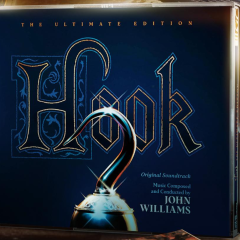
Mulan (2020) by Harry Gregson-Williams
Pieter Boelen reacted to Jay for a topic
Funny: I hadn't known they gave her super-powers in this movie, or that it featured villains that turn into animals... what's the point in taking a talking dragon out if you're just gonna do that?1 point -
1 point
-
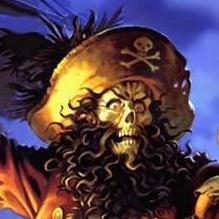
Villeneuve's DUNE
GerateWohl reacted to Romão for a topic
Oh yes, very Baleen Whale like. And does bring out the eye parallel The use of Pink Floyd might be a nod to Jodorowsky's Dune, where they were set to do part of the score1 point -
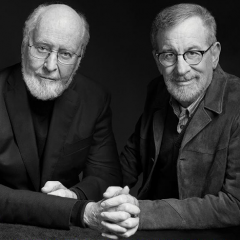
REMIXED & RESTORED: Jurassic Park
bruce marshall reacted to Mr. Breathmask for a topic
21. To the Maintenance Shed **/High-Wire Stunts */Hungry Raptor * 11m2 Preparing to Meet the Monster 11m2-12m1 High Wire Stunts 12m2 Hungry Raptor To signal the transition into the a new mission for the heroes, Williams plays a militaristic version of the adventure theme, as Muldoon and Ellie gather their gear to venture outside. Once they are out in the open, the score returns to the familiar texture of the ominous jungle. The carnivore motif gets a big rendition as the broken raptor fence is revealed. Jungle drums up the tension as Ellie makes herself ready to storm the power shed. Another frantic action cue underscores her dash before the music becomes more subdued as she makes her way inside. A final chord takes us to Grant and the kids arriving at the perimeter fence. This first cue plays pretty much in its entirety, but making the video required some editing to get everything to line up correctly. The first chord fades in slightly later in the film, with the music not starting until we cut to Ellie on the stairs. There’s also a minor edit somewhere in the first part of the track. You’ll notice the video go black for a moment at my best guess at where footage was cut from the film. The cue then continues exactly as it does on CD, except that the gap left for Muldoon’s “Because we’re being hunted” is longer in the film. I have edited the music accordingly, to leave the flow of this scene intact. The next cue is the tense build-up of High Wire Stunts, which underscores Grant and the kids’ climb into the perimeter, intercut with Ellie switching on the power. The first minute of the cue is unused in the film, with the music not coming in until after the distant T-Rex roar. In the film, a short clip from the start of The T-Rex Chase is used to kick off the cue. High Wire Stunts was supposed to overlap with the end of Preparing to Meet the Monster, starting right as we cut to the perimiter fence. The pause for Grant's fake electrocution was shortened for album purposes. Another big statement of the carnivore motif is cut from the film here, originally overlapping with the roar heard from off-screen. As Lex and Tim react to the sound, the music turns more urgent and this is where the film first picks up the track. When playing this scene with music, the music brings an urgency to the scene right from the start. In the final film, the T-Rex roar is what triggers the urgency in the characters, so the scene works very well without music at the start. The silence actually elevates the scene more than the tense music, lending room to some levity with Grant and the kids and saving the danger for after the T-Rex kicks the kids into gear. The cue continues as is, until a clumsy music edit in the film removes the short drumroll that is heard as Grant turns to the fence to go up and get Tim. The final two chords of the track were also dropped to make way for Ellie’s dialogue and a brief silence before a hungry raptor comes crashing through the pipes… And here we find the most notable passage of dropped music in Hungry Raptor, as Ellie is ambushed by a vicious velociraptor. Iterations of the carnivore motif follow in rapid succession over a frantic action motif accompanied by synthesizer percussion as Ellie hauls ass out of the maintenance shed. Stylistically, it’s slightly different from the other action music in the film. If it wasn’t for The Making of Jurassic Park using this piece for the end credits, we might not have known a piece like this was written for the film until the release of the 20th Anniversary Edition soundtrack in 2013! In the film, this sequence was tracked with various pieces of the film’s finale. For a piece that was created by editing bits together, it actually works quite well. The dropped piece is longer than the chase in the film, so we can assume something was cut. If we start the cue right when the raptor appears next to Ellie - which would have it start exactly where the unused conclusion of High-Wire Stunts ends - the music lines up pretty well until the raptor jumps onto the metal floor. I assume an edit was made here. To pick up the film image again, I have synced the latter half of the cue with its start in the film and worked backwards from there. After Ellie's mad dash from the maintenance shed, the written score returns in the film as Muldoon hunts the escaped raptors. Tense jungle textures with the carnivore motif overlaid accompany him getting into position. The final part of the cue, starting with the raptor’s head appearing next to Muldoon is dropped in favor of music from the end of The Raptor Attack and a mix favoring the sound design. As written, Williams uses a loud and aggressive rendition of the carnivore motif to underscore the attack on Muldoon. This concludes ten minutes of continuous score, from which a large chunk went unused. But it doesn't end here. Up next is another unique bit of scoring that was almost entirely dropped from the film...1 point

